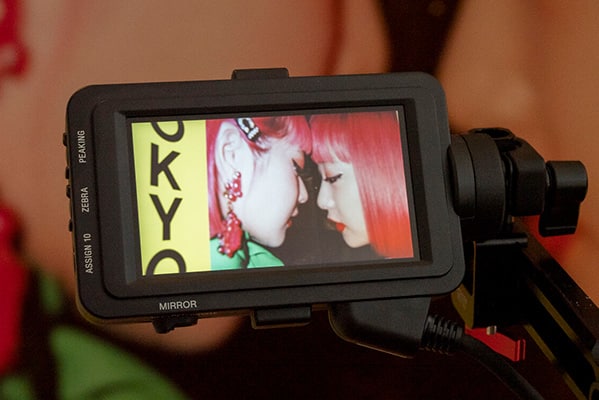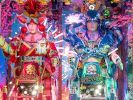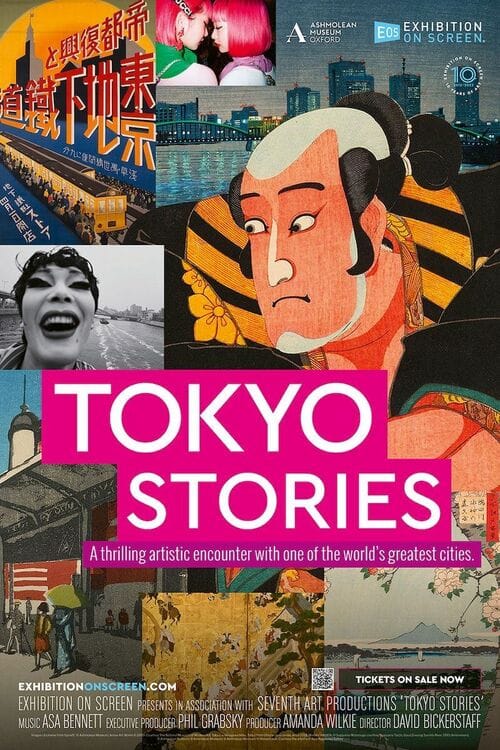Eye For Film >> Movies >> Tokyo Stories (2023) Film Review
Tokyo Stories
Reviewed by: Jennie Kermode

The Exhibition On Screen series has taken on many different subjects in its time and has several times explored the relationships between individual artists and the cities or rural spaces where they worked, but to date it has only taken one focused look at a country – Denmark – so this new film, whose reach extends beyond Tokyo to touch on Japanese art more widely – is something a little different for its fans. As it reflects not only on the country’s present but on its artistic history, it is massive in scope – yet like all the best entries in the series, it never seems to skim over its subjects too lightly, instead burrowing down into a succession of movements and their origins, leaving viewers saturated with information.
What does Tokyo mean to you? It is presented here as a multi-layered city, one which has fallen repeatedly and been rebuilt, always clean and modern yet drawing on tradition. The streets through which we glide in the film’s opening scenes have been traversed so often in cinema that you may feel as if you know them, but director David Bickerstaff is keen to get at the hidden Tokyo, beyond the glowing Hello Kitty billboards and elegantly styled traffic overpasses, the neon lights and the Harajuku fashion – beyond Fujiyama architecture, geishas, animé and manga. Photographer Moriyama Daidō calls the city – and Shibuya especially – “a stadium of desire.” It is a place bursting with creative energy, yet its creations are not what you might expect.

In an attempt to understand – and conscious of his gaijin perspective – Bickerstaff reflects on the history of art in a place where it was traditionally inseparable from craft, where aesthetic tradition was woven into daily life. It wasn’t until the Meiji period that Japanese artists began to perceive what they did as something distinct. Furthermore, art in Japan was never something which belonged primarily to the upper classes. Woodblock prints were affordable for pretty much everyone. Like TV travel shows in the 1960s, they provided ordinary people with images of famous places which they would probably never have the chance to see for themselves. We see here how popular demand also led to the mass production of images of famous kabuki actors and courtesans.
There’s a tension here between representative and vérité art, which wasn’t popularised in Japan until quite late, though the assertion that the codification of beauty is something unique feel a bit off – Medieval European images often use blond hair to symbolise beauty, for instance, even when depicting historical figures whom we know had hair of different colours. What’s interesting is the way that the heavier focus on the symbolic in Japan bleeds through into present day works.
The impact of historic events on developing artistic traditions gets extensive focus. Japan has, after all, had to deal with more than its share of large scale catastrophes, not least because of its geological situation. if you’ve ever wondered about images of Japanese people struggling against giant catfish – namuzu – that’s where they come from, living in a subterranean ocean and flapping their tails against the land mass to cause earthquakes, needing to be driven off by ordinary people in the marked absence of help from the authorities – so images which might seem like pure fantasy are revealed to have a satirical aspect. They seem like forerunners of the similarly political kaiju tradition in cinema, and works like Satoshi Miki’s recent What To Do With The Dead Kaiju?
There is a lot of fascinating material here related to World War Two, from propaganda to critique, and it’s interesting to see how artists reacted to the de-deification of the Imperial family. Connected with this is a section on protest art, with particular emphasis on photography, which gained massive attention in the country as it sought to regain economic standing in the aftermath of the war. The more recent emergence of female photographers, some of whom approach traditional motifs in a very different way, helps to recontextualise a lot of what the film has already shown us.
With a subject like this, one could go on forever, and the film will leave you with as many questions as answers – but isn’t that what art ought to do? It does achieve a sense of completion nonetheless – a rounded, satisfactory introduction which will immediately enrich your understanding of many things you see day to day. And therein lies the really interesting question, never addressed directly but lingering nonetheless. Japan is one of few cultures which have not only resisted pressure to westernise but have successfully spread their own artistic concepts far beyond their borders. What is its secret? The allure of Tokyo now is like Paris in the late 1800s or Rome a millennium before. Viewing present day Japanese art, in all its diverse forms, one feels that one is looking not just at the work of one country, but at the future.
Reviewed on: 22 May 2023

















